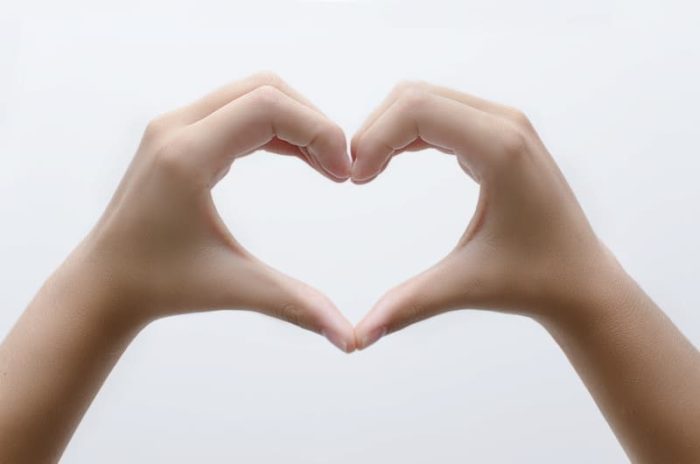- Calls to this hotline are currently being directed to Within Health or Eating Disorder Solutions
- Representatives are standing by 24/7 to help answer your questions
- All calls are confidential and HIPAA compliant
- There is no obligation or cost to call
- Eating Disorder Hope does not receive any commissions or fees dependent upon which provider you select
- Additional treatment providers are located on our directory or samhsa.gov
Unattainable Standards on Social Media Lead to Negative Body Image in Men

Sponsored By: The Refuge – A Healing Place
You may think that only women worry about the way they look. But men have these concerns too, and this can seriously affect their relationships with their bodies.
One of the major culprits is social media.
“I think there’s this huge expectation to look and act a certain way,” Spencer Cooper, who said that his body image has been affected by social media, told BBC News. “The image that keeps flashing through my mind is these buff, ripped muscly men who post their bodies on social media a lot” [1].
Cooper’s observations are pretty on target.
Social Media’s Ideal Man
Researchers analyzed 1,000 Instagram posts to see how users portray male body image on the platform [2].
More than half of the posts (62%) depicted lean men who were very muscular (41%), and many users showed themselves doing things to change their weight or body shape, such as exercising (86%), taking part in a specific diet (38%), or reducing their caloric intake (1%) [2].
Many of these men also integrated text into their posts so that they could talk about their health or fitness goals (53%), while others talked about feeling attractive (44%) or masculine (less than 1%).
But what may be even more telling is how other users reacted to their posts.
The researchers found that the Instagram posts of lean, muscular men got much more engagement than posts by men who were less muscular or had more body fat.
The reality, however, is that worldwide, only about 37% of men are as lean and muscular as the men getting all the engagement on Instagram, the researchers said.
“These bodies are attainable for a small number of people — maybe half a percent of the male community,” Aaron Flores, a registered dietitian nutritionist who specializes in male body image, told Healthline. “Yet they’re associated with the idea of masculinity — the notion that as a man, I have to look a certain way, act a certain way” [3].
Call The Refuge – A Healing Place for Help 855-580-9684
Social Media’s Impact on Male Body Image
The misrepresentation of male bodies on Instagram is not exactly harmless. In fact, the pressure men feel to sculpt their bodies into muscled perfection can make them feel dissatisfied with the way they look.
The National Eating Disorders Association (NEDA) says that the drive many men feel to be lean and muscular comes from a cultural belief that there is an ideal male body type, which includes a perfect, muscular physique. The emphasis on having a sculpted body has led about 25% of men to believe that they are underweight and 90% of adolescent boys to exercise so that they can gain muscle mass [4].
But when a man is eating and exercising to achieve the perfect body, it makes sense that he might struggle with body image.
This can make a man believe that his body is less attractive than others, says NEDA. He may also feel ashamed of or self-conscious about his body or struggle with anxiety about the way his body looks [5].
Eating Disorders in Men
NEDA warns that body image concerns can be a precursor for eating disorders such as anorexia nervosa, bulimia nervosa, and binge-eating disorder.
That’s because the drive to look like the men in those Instagram posts can push some men to develop an unhealthy relationship with food and their body. They may exercise excessively, binge eat and then purge later, restrict their food intake, or abuse laxatives.
What may have started as a #fitnessgoal can then snowball into an uncontrollable compulsion to get leaner and more muscular, and that can be dangerous for a person’s health.
Of the people who meet the criteria for an eating disorder, 25% who have anorexia nervosa, 25% who have bulimia nervosa, and 36% who have binge-eating disorder are men. And more men than ever have been seeking treatment or been hospitalized for an eating disorder [6].
Unfortunately, stereotypes about eating disorders still exist today — namely, that they are illnesses that only affect young women. That’s why so many men stay quiet about their struggles with body image or their relationship with food [7].
Men are also much more complex than cultural stereotypes give them credit for. While many men are concerned about not having the ideal, musclebound body, others aren’t. In fact, some men are dissatisfied with their weight, shape, or other concerns related to body image that have nothing to do with muscle mass.
Regardless of the influence, eating disorders do impact men. That’s why it is so important to create more safe, welcoming spaces where men can discuss their struggles with body image and their relationship with food.
References
[1] Baggs, M. (2021, April 28). Body image affects half of men’s mental health, new study shows. BBC News. https://www.bbc.com/news/newsbeat-56904488. [2] Gültzow, T., Guidry, J., Schneider, F., & Hoving, C. (2020). Male body image portrayals on Instagram. Cyberpsychology, Behavior, and Social Networking, 23, 5. https://doi.org/10.1089/cyber.2019.0368. [3] Chander, R. (2018, October 18). With superheroes comes the pressure of unrealistic male bodies. Healthline. https://www.healthline.com/health/mental-health/male-body-image-problems. [4] National Eating Disorders Association. (2021). Eating disorders in men and boys. https://www.nationaleatingdisorders.org/learn/general-information/research-on-males. [5] National Eating Disorders Association. (2021). Body image and eating disorders. https://www.nationaleatingdisorders.org/body-image-eating-disorders. [6] National Eating Disorders Association. (2021). Men and eating disorders. https://www.nationaleatingdisorders.org/men-eating-disorders. [7] Bradley University. (2021). Male vs. female body image. The Body Project. https://www.bradley.edu/sites/bodyproject/male-body-image-m-vs-f/.About Our Sponsor:
 The Refuge, A Healing Place is a nationally respected provider of treatment for adults who have been struggling with substance use disorders, the effects of trauma, eating disorders, and mental health concerns. Located on 96 acres amid the beautiful Ocala National Forest in Ocklawaha, Florida, The Refuge’s campus is an ideal treatment environment for clients to step away from everyday stress to focus on their health. Treatment options include residential care and a partial hospitalization program, along with medical detoxification, a relapse prevention program, and four-day intensive retreats that incorporate family and friends.
The Refuge, A Healing Place is a nationally respected provider of treatment for adults who have been struggling with substance use disorders, the effects of trauma, eating disorders, and mental health concerns. Located on 96 acres amid the beautiful Ocala National Forest in Ocklawaha, Florida, The Refuge’s campus is an ideal treatment environment for clients to step away from everyday stress to focus on their health. Treatment options include residential care and a partial hospitalization program, along with medical detoxification, a relapse prevention program, and four-day intensive retreats that incorporate family and friends.
The opinions and views of our guest contributors are shared to provide a broad perspective on eating disorders. These are not necessarily the views of Eating Disorder Hope, but an effort to offer a discussion of various issues by different concerned individuals.
We at Eating Disorder Hope understand that eating disorders result from a combination of environmental and genetic factors. If you or a loved one are suffering from an eating disorder, please know that there is hope for you, and seek immediate professional help.
Published July 15, 2021, on EatingDisorderHope.com
Reviewed & Approved on July 15, 2021, by Jacquelyn Ekern MS, LPC


